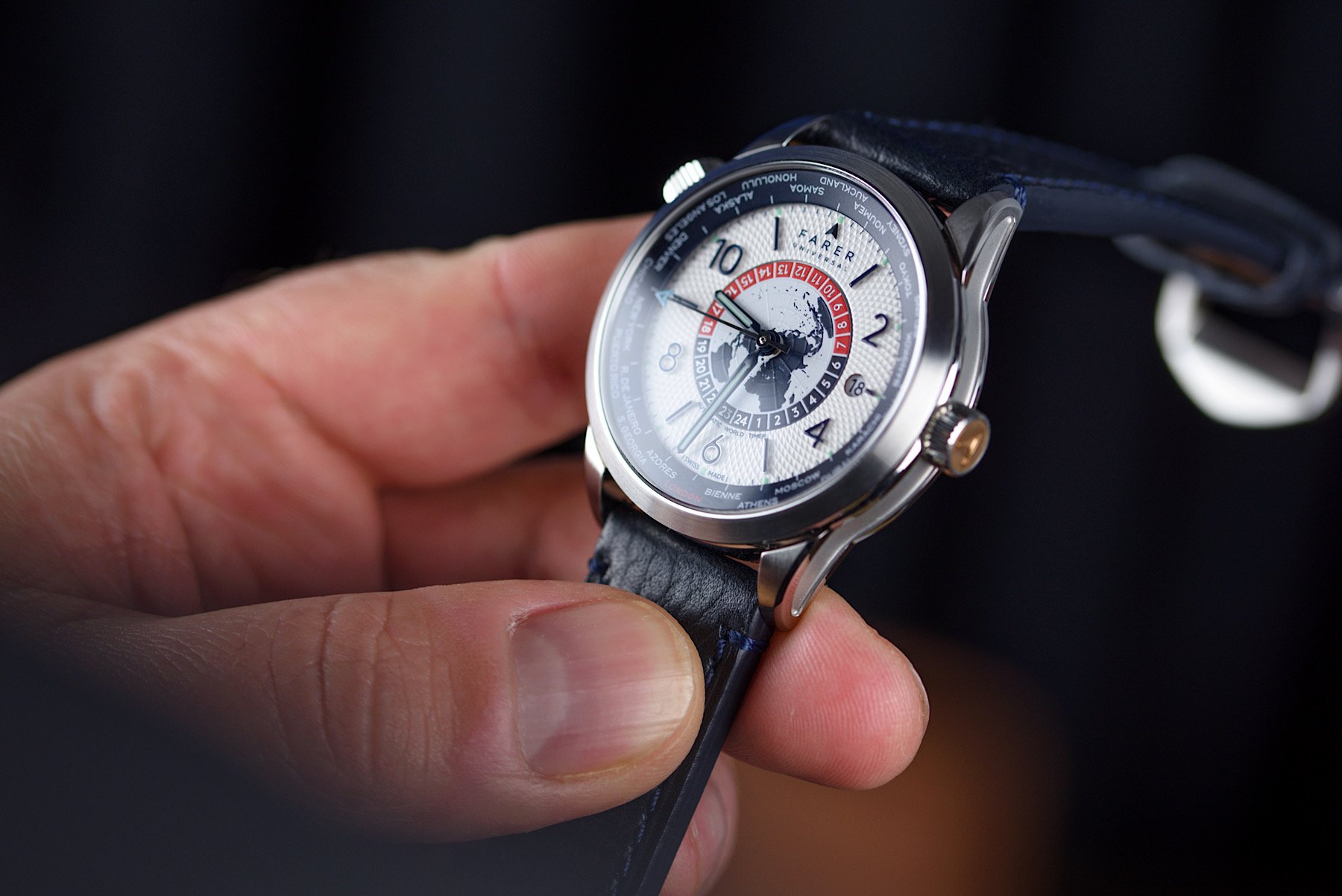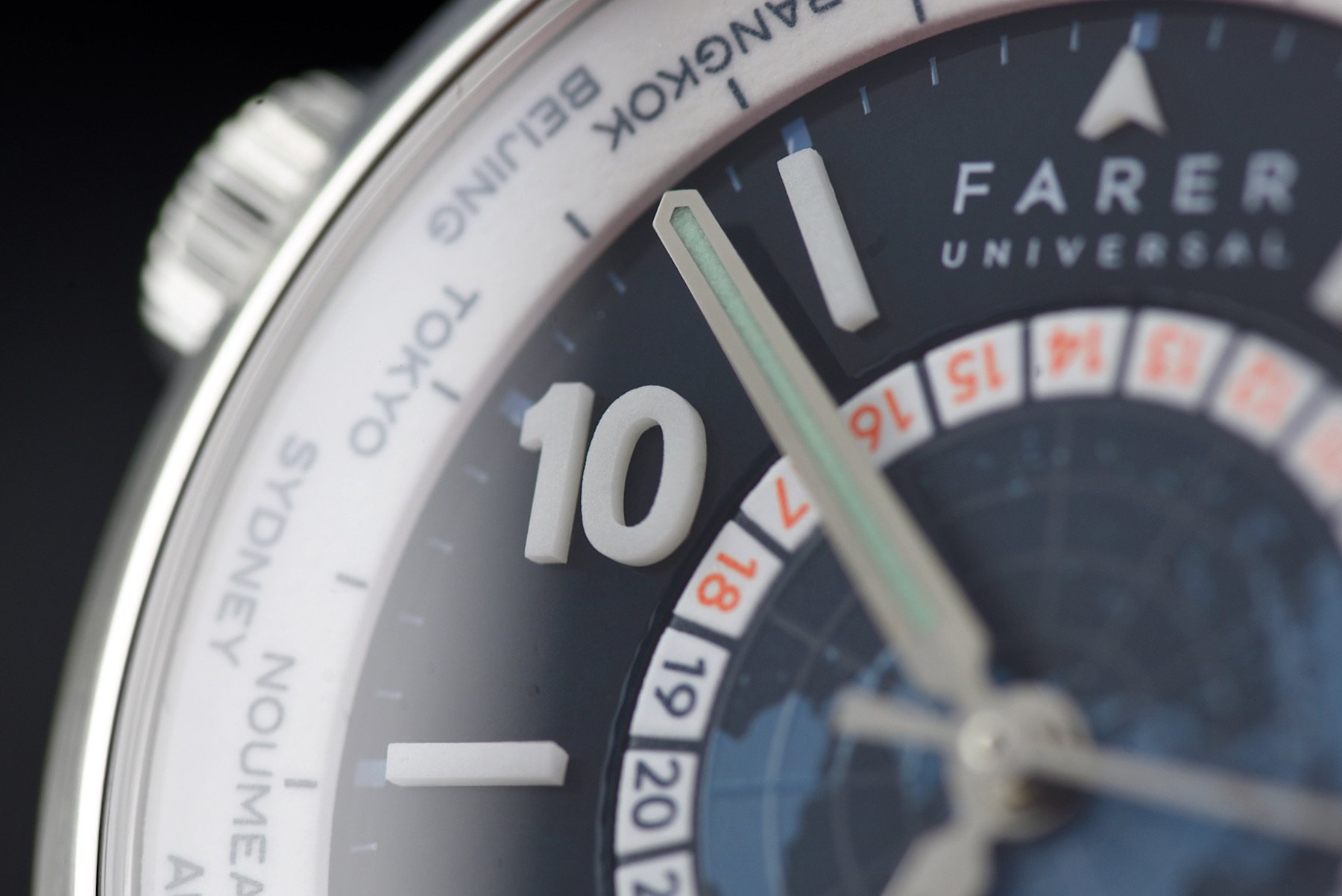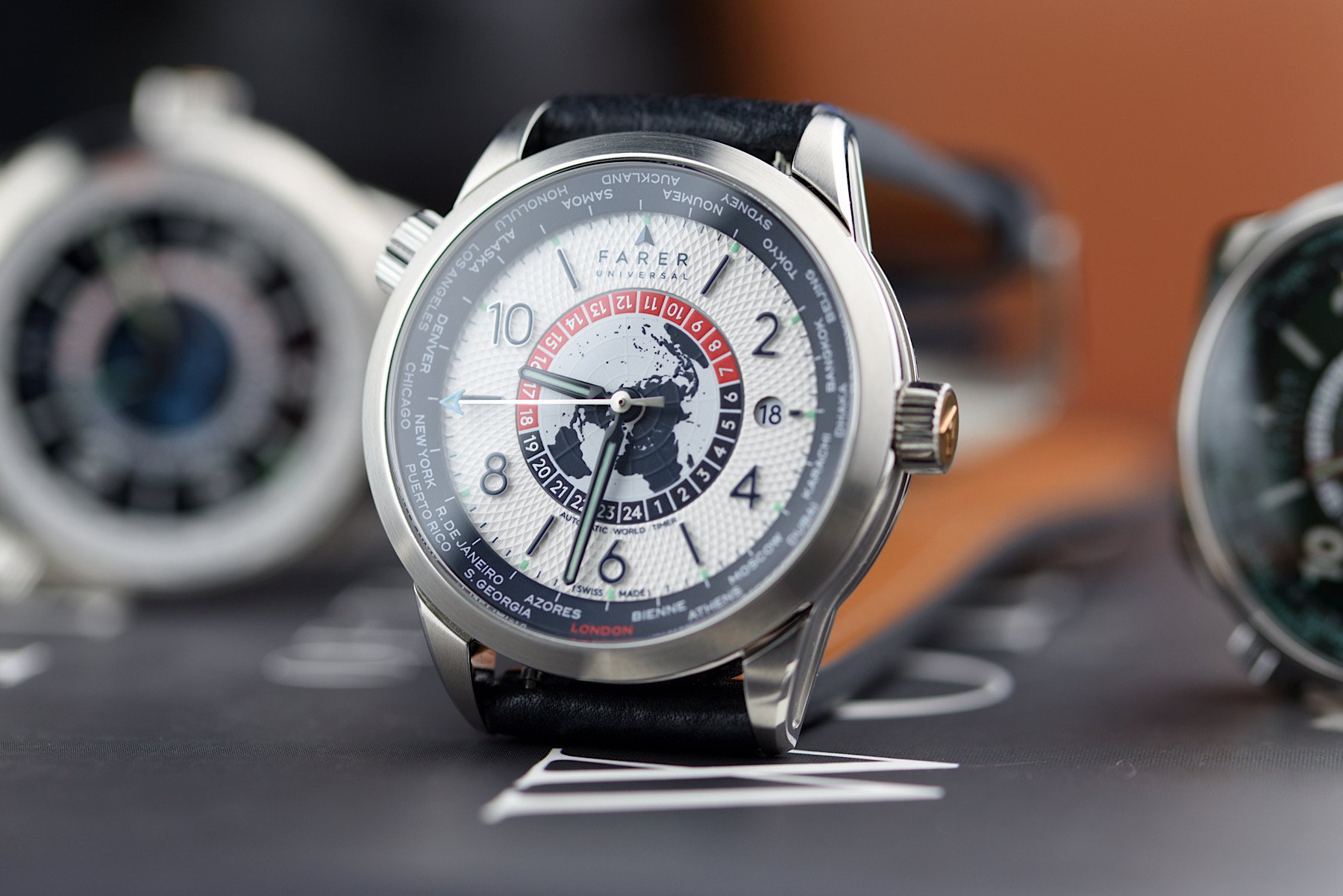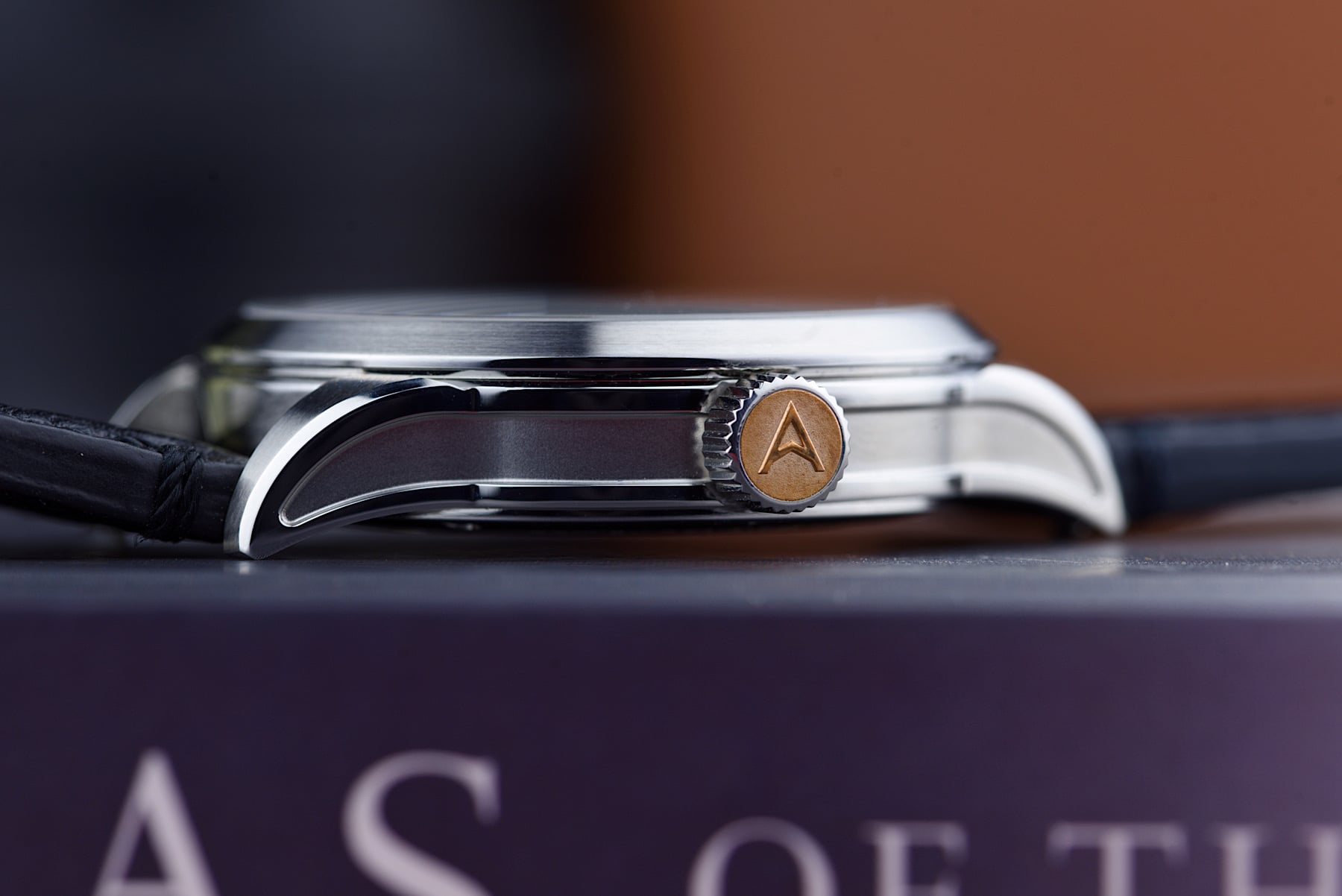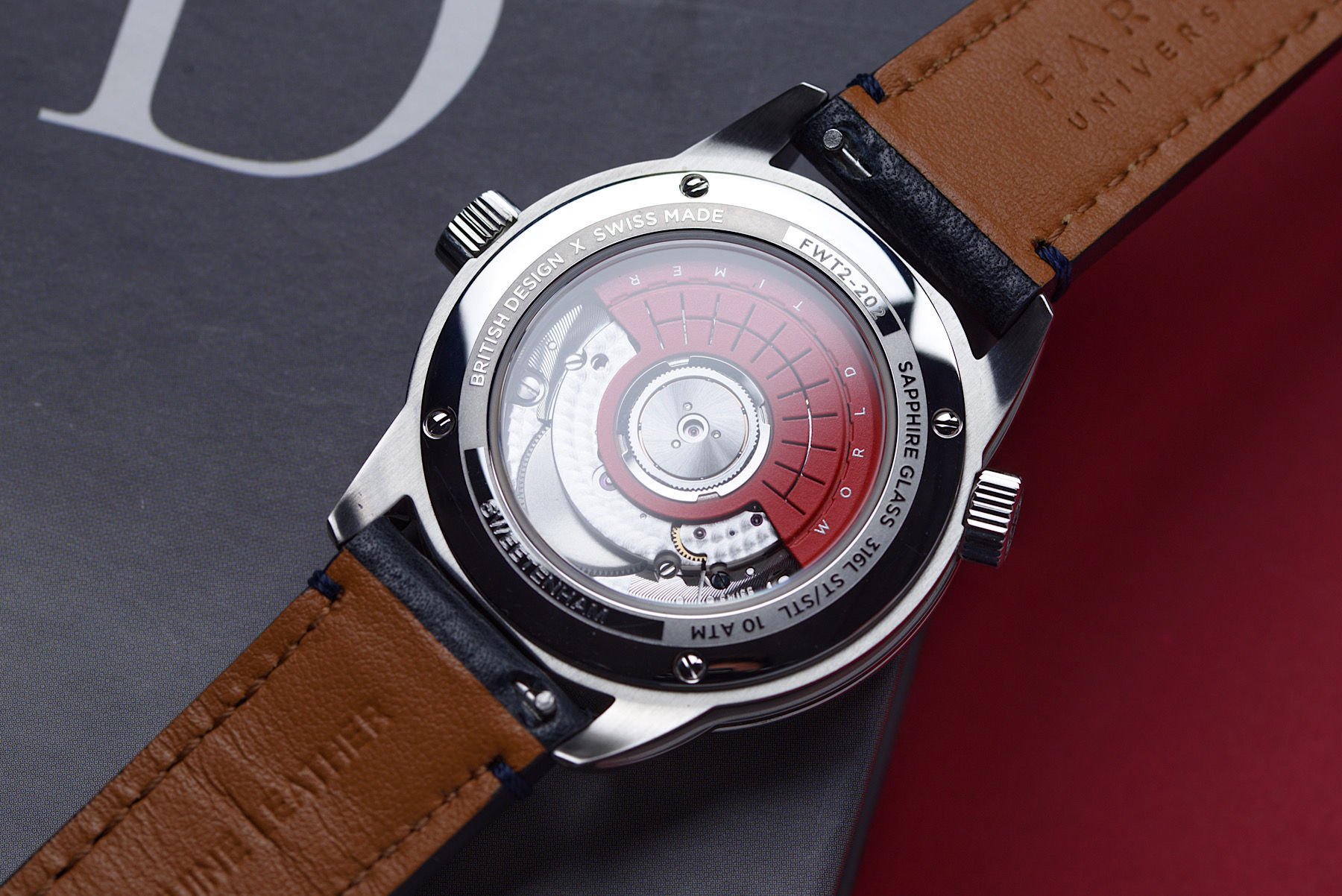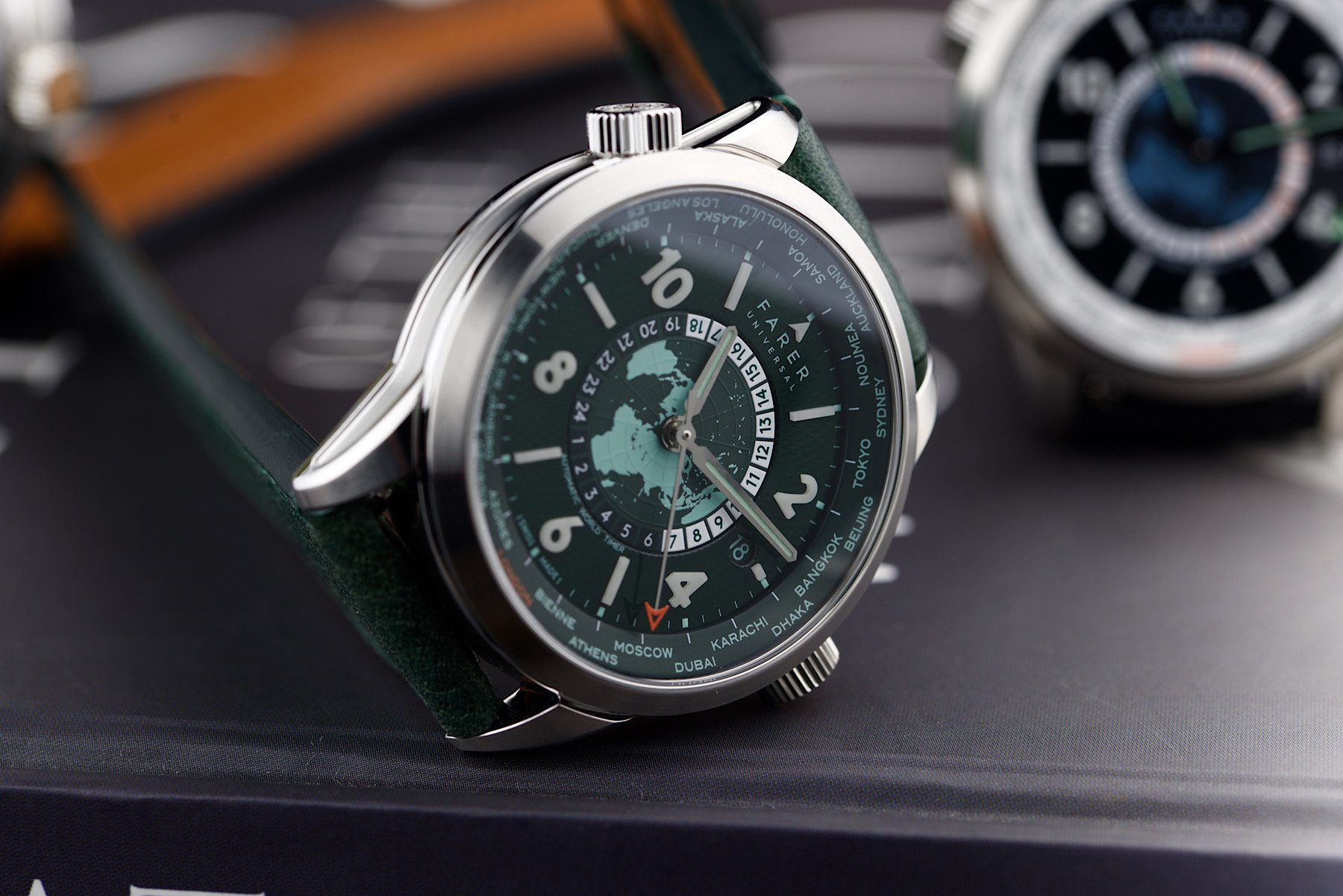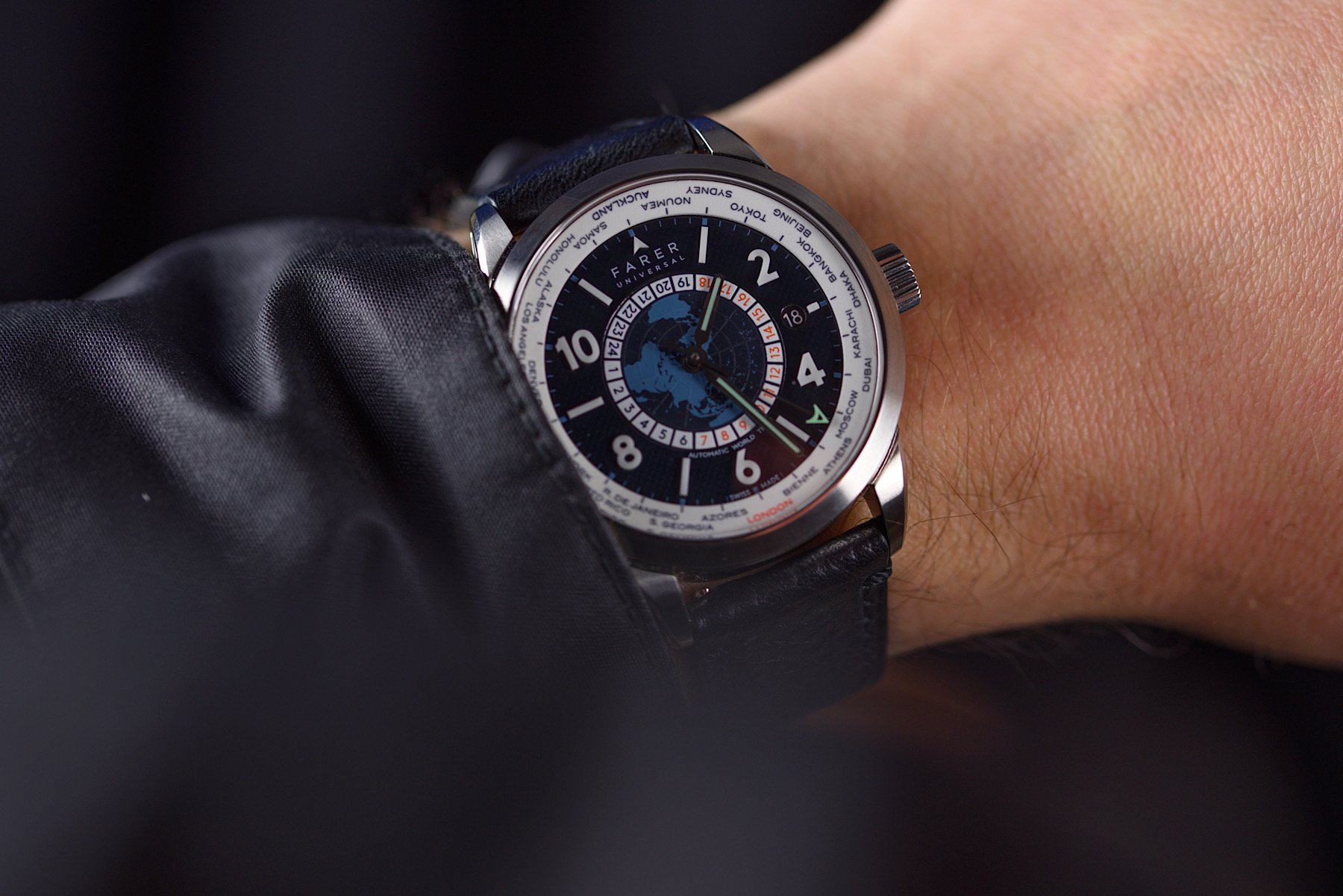Hands-On With A Trio Of New World Timers From Farer
I am happy to go on record and say that a world timer simply makes more sense than a GMT. A GMT watch, particularly one with a quick-set 12-hour hand, is a true traveler’s watch. However, I spend countless hours sitting in my home office but communicating and collaborating with colleagues and friends worldwide. After calibrating a world-time complication to my home time, I can simultaneously read the time in any of the 24 time zones spanning the dial.
The collection of watches I am looking at today is the new series of World Timers from Farer. Earlier watches from the brand with this complication sold out (on two occasions), so it’s no surprise to see an updated version eventually released. Two original colorways (the deep blue Roché and the predominantly white-dialed Markham) are now joined by a rich green dial named Foxe. Aside from a little deviation in color and lume application, all three are identical. However, each offers something entirely different on the wrist.
Three color variants
Let’s start by looking at what is different in each variant. The familiar Roché model features a deep blue hue across most of the dial, with a rotating world map in two shades of blue in the central area. The rotating city ring features blue lettering against a lumed surface. Additional color comes from the “daylight” hours of the 24-hour ring and the “London” text (signifying the brand’s home) printed in orange. The Markham also includes a contrasting dial and rotating city ring, this time with red as the backdrop for the 7–18-hour markings and the “London” text. This version’s world map features the same blue and white as the rest of the dial.
The deep “Foxe” green dial is the only one that keeps the dial and rotating chapter ring the same color. This makes it the most subtle of the three. Although there are, again, dashes of color to pick out, the whole world-time complication becomes much more understated. Each of the three dials has the same stamped guilloché pattern, but due to the color choice, this is most muted on the green variant and most noticeable on the white. Flip each watch over, and the rotor matches a color used on the dial. This means a light green rotor for the Foxe, a red rotor for the Markham, and a light blue one for the Roché.
Three-dimensional lume (on some models)
As well as differences in visual impact between each model, there are also significant differences in the application of lume between the three. The Roché and Foxe have indices cut from three-dimensional blocks of Super-LumiNova. This makes for a striking effect, especially as the light starts to fade and the lume begins to shine. Yet, the rest of the watch is still visible to some degree. The Markham’s white dial has dark, applied indices that are not lumed in the same way. Only a small dot outside each hour marker has lume applied, glowing the same light green as the hands, so the effect is nowhere near as dramatic.
Making use of the world-time function
With the differences out of the way, let’s look at what is standard across all three variants. The functionality is the same in each watch. The hour, minute, and seconds hands are joined by a color-matched date wheel at 3 o’clock on the dial. The first position of the push/pull crown is used to set the date by rotating in a counterclockwise direction. You can also set the inner 24-hour ring by rotating the crown clockwise. The second position of the crown stops the seconds hand and allows you to set the local time as usual.
The second crown, tucked out of the way by the 10 o’clock marker, rotates the outer city disc. Again, this crown doesn’t screw down but rotates the disc in both directions, with each of the 24 locations nestling securely into place. I did not need to touch this further once “London” was set to the bottom of the dial. With the 24-hour disc set correctly, you read the time in each location against the inner disc.
Aside from the new dial, the new World Timers look very similar to the previous models from Farer. The most noticeable change is an updated handset. Straighter, more baton-like hour and minute hands replace the more triangular lance hands that were present previously. The seconds hand resembles a traditional GMT hand, though it moves much more rapidly. It is capped with the Farer “A” logo. Another minor change is that Bienne occupies the GMT+1 space on the rotating city ring. It acknowledges the Swiss town where the watches are produced, pushing Paris out of the way.
A combination of case finishes
The Farer World Timer case is stainless steel with a combination of brushed, polished, and blasted finishes. Usually, I’d suggest that three different finishes might be too much for a single watch, but it all meshes effortlessly. The bezel and lugs are brushed circularly and vertically, respectively, while the case walls have slight depressions cut into them on both sides. The inner part of these surfaces receives the blasted finish, with the perimeter, bezel, and lug chamfers being polished. This combination of surfaces and finishes offers enough visual intrigue without becoming too sporty or dressy. The signed bronze inlay on the primary crown is another interesting touch that comes close to being out of place but somehow still works.
At 39mm in diameter and only 45mm from lug to lug, the watch feels appropriately sized. It’s well within the comfort zone of my 17.75cm (7″) wrist, and due to the short lug-to-lug distance, I suspect it would still wear well on a significantly smaller wrist. However, as mentioned at the start, the choice of color variant dramatically impacts how it looks. The white outer ring of the Roché or the predominantly white dial of the Markham means that these models have the most significant visual impact, while the new Foxe looks like the smallest of the three, even though they are the same.
The movement powering the Farer World Timer
It’s been a little while waiting for Farer’s World Timer to return, and part of this delay is due to the availability of a suitable movement. These new models now sport a modified Sellita SW330-1 automatic caliber. The mechanism that drives the central globe disc and 24-hour ring replaces the standard GMT hand from this movement. Farer has also worked with Sellita to use the mainspring from the SW330-2, which extends the power reserve to 50 hours. The Elaboré-grade movement is adjusted in four positions, while the finishing is performed in line with Sellita’s Top grade.
Each of the three variants I’ve been looking at comes fitted with a quick-release leather strap measuring 20mm at the lugs. The new Foxe colorway has a matching deep green strap, while the other models feature a more reserved black leather. I can’t say anything negative about any of the straps that come with the watch. However, each watch has enough small color cues that a different strap choice can enhance. Farer will also be offering a bracelet for this model, though I haven’t had the opportunity to try that out.
Concluding thoughts on the Farer World Timer
There are several reasons I prefer a world timer watch to a GMT. Keeping primary time-telling simple by excluding an additional hand is one. Being able to easily see the time across many locations rather than just one additional time zone is another. Finally, there’s the visual appeal of having that central rotating disc and outer adjustable ring too. I guess that last reason is a very subjective one, though. Farer’s new World Timers are slightly more serious and less fun than many of the brand’s other watches with vibrant color palettes. That’s not a bad thing, though; at heart, what you get is still a Farer. The blue-dial Roché has been on my wrist more than the other two, and I smile each time the mint-green tip of the seconds hand catches my eye.
The new Farer World Timer costs £1,495 (€1,695 / US$1,695). To purchase any of the three new watches or for more information, head to the official Farer website.

